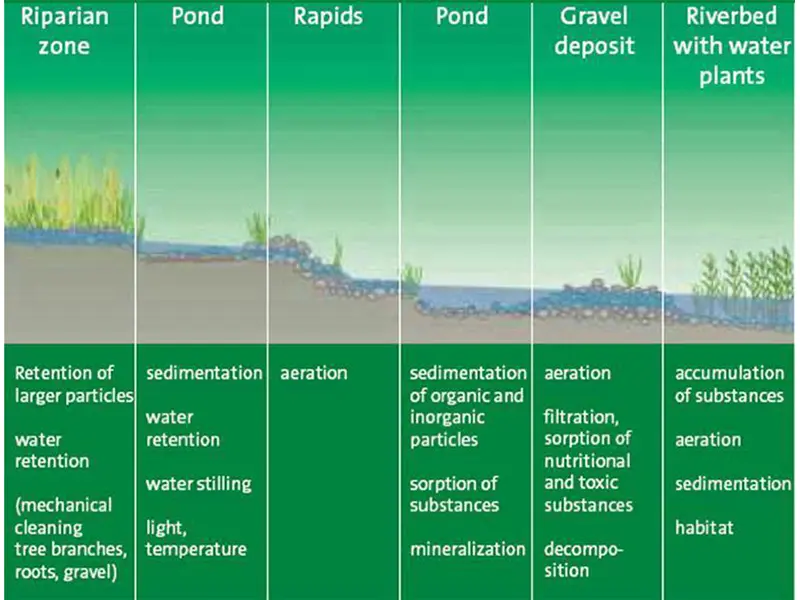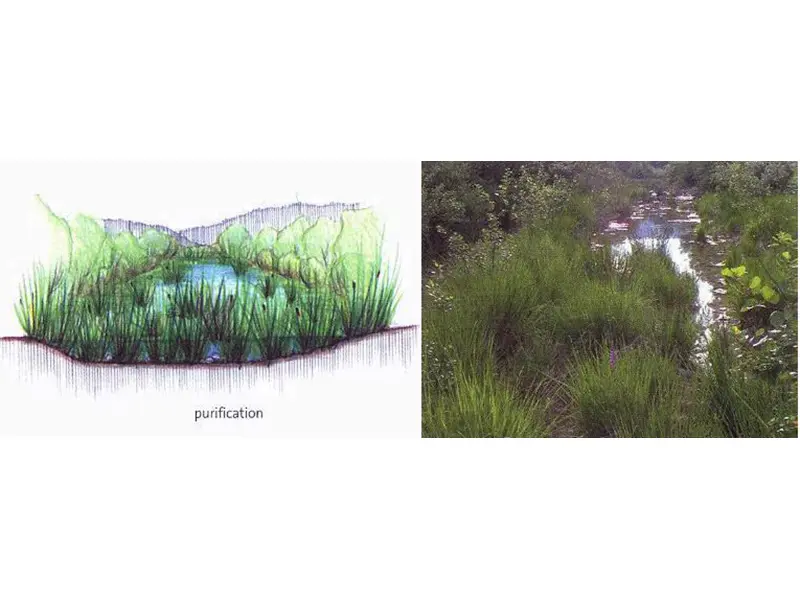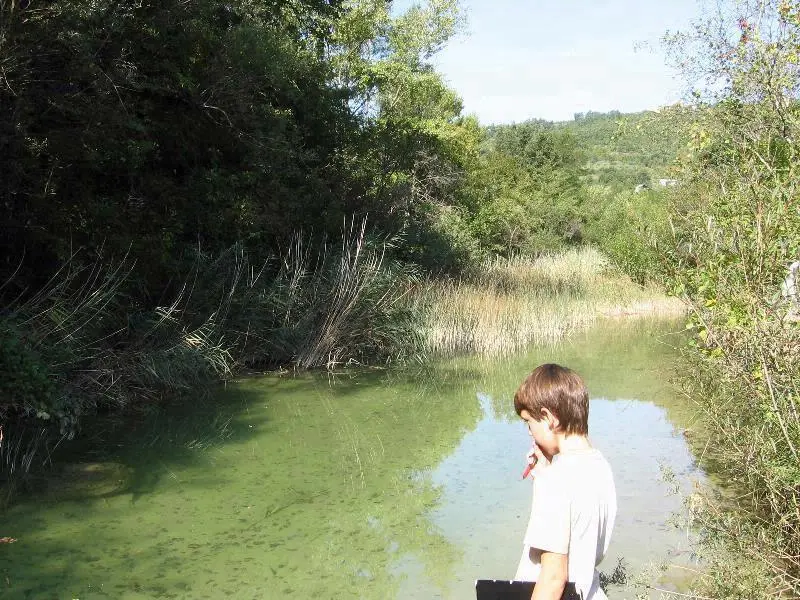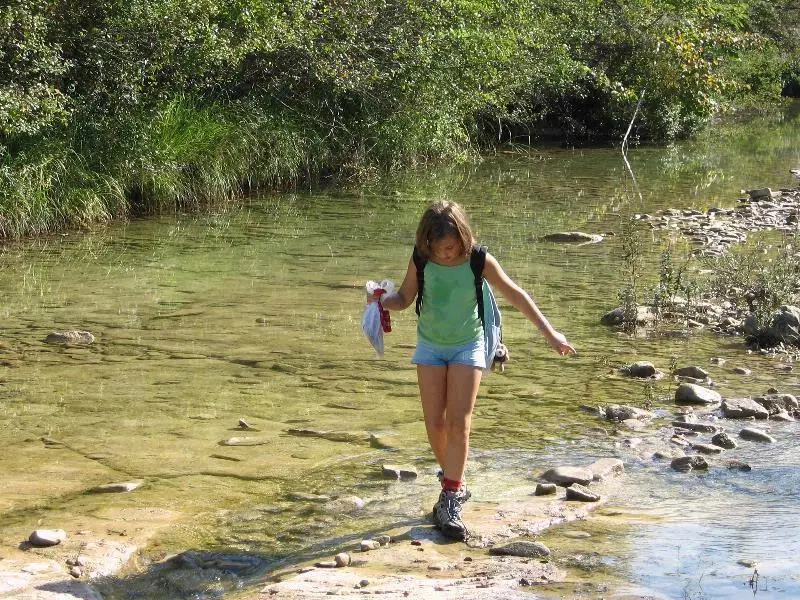Vegetation as a natural water filter
Plants are an important element in river ecosystems. Vegetation stabilizes the banks, and plays an important role in the self-purification of the stream water. In this experiment the pupils will aim for assessing the impacts of different types of river vegetation on the optical quality (transparency, colour) of the water.
Learning goals
- Recognise types of vegetation that can be found along a river
- Understand the importance of vegetation zones regarding bank stabilisation and self purification
Background information
A natural river is always connected to different kinds of vegetation. Plants or trees growing along the river banks are important for the soil stabilisation and for protecting the surrounding land areas from flood and erosion. In addition, the bank vegetation acts as an important nutrient input into the river system, especially in alpine regions.
This experiment however will focus on the vegetation growing in the water and its impact on flow patterns, sedimentation processes and self-purification effects.
Vegetation growing in the river bed, such as reed beds, slow down the stream velocity and support sedimentation processes of dissolved particles. Reeds and other water plants also favour microbiological decomposition of organic materials and toxic substances in providing oxygen to the micro organisms living in the sludge of the river bed.
In nature, reed beds are basically temporary habitats. Under normal circumstances, an unmanaged reed bed shows a succession from young reed colonising open water or wet ground towards increasingly dry ground. As reed beds age, they build up a considerable litter layer which eventually rises above ground or water level, and ultimately provides opportunities for scrub or woodland invasion. Naturally developing reed beds are found in floodplains, waterlogged depressions and estuaries. Most European reed bed species belong to the genera Phragmites and Scirpus.
Time requirement
The experiment will take 2-4 hours and is recommended to be planned as a half day excursion. The time requirement will also be highly dependent on how far you need to travel to come to a suitable river location.
Material requirement
- 1 class set of meters
- 1 class set of white paper and pencils
- 20-30 beakers
- 1 litre of deionised water
- 1 colour table
- 2-5 plastic bottles
Let's start
First the pupils should look for different vegetation zones and try to gather information on plant species, height and density. The density can be measured in counting the number of plants on a square meter.
To look on the impact of the vegetation zones on water quality we will use colour, and smell as qualitative indicators. This method is easy to conduct. However it will not really tell you if the water is clean or polluted. Coloured water can be caused by natural sediments and may be drinkable, while clear water can be polluted by chemicals and highly poisonous.
Nevertheless you will get an idea on changes that happen in vegetation zones. It is also possible to «pollute» the water above a vegetation zone with humus or fine sand and observe what happens with those particles along the passage through the vegetated bed.
With the beaker take different water samples above, inside and below vegetation zones like reed beds.
To analyse the colour, place the beakers on a white paper, together with a beaker filled with deionised water which serves as reference. Determine the colour with the help of the colour table.
To assess the smell, fill half of a plastic bottle with the water sample, shake it slightly for a half minute, open it and smell immediately. Afterwards determine the type and strength of smell.
See and feel
- Vegetation (species, height and density)
- Water colour
- Water smell
Didactical comments
- Ask the children to wear rubber boots. Consider the security issues outlined in experiment «Orientation and terrain structures along rivers».
- Allow the pupils time to develop some ideas how to measure the impact of the vegetation zone on the water quality.



